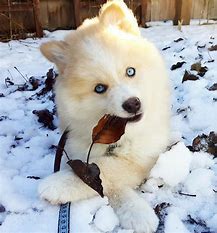How to Train a Dog: A Step by Step Guide is an easy job if you know how to do it properly.

Training your dog is important for helping their behavior and your relationship.
A well-trained dog helps to make life easier for you and your canine. The following information will provide you with step by step information about the best ways to train your pooch.
Step 1: Figure Out want you Want to Teach your Dog
You have to figure out what you want to teach your dog in advance. If you don’t, you will have a hard time effectively training them. Also, you should train your dog to fulfill a purpose or behavior.
You shouldn’t just train your dogs to do things that are meaningless, entertaining, or for show.
For example, if you want your dog to stop harassing people they meet; then focus your training efforts on how to control themselves when other people come around. Just make sure you are training them with the behavior you want them to have.
Things you can teach your dog:
How to Fetch
How to Control Barking
How to Behave around People in PublicStep 2: Create the Conditions for the Learned Behavior
If you really want your dog to learn a new skill you must create the conditions where the new behavior will be used.

If you teach your dog a new behavior and they don’t use it; they will probably end up forgetting it.
Make sure you create the conditions for your dog to learn a new behavior.
This goes back to figuring out what your dog needs to know. For example, don’t teach your dog how to follow a scent if you never use your dog for picking up the scents of people and things.
Step 3: Create Incentives for the Behavior
You can get your dog more involved in the training process when you create incentives for a new learned behavior.
These incentives can be everything from snacks, a pet toy, or some other lure that will make your dog more receptive to training.
Remember, that dogs are motivated by what they can get and what pleases them.
When you reinforce good or pleasurable behaviors, they are more willing to learn new things. Figure out what makes your dog happy and use it to create incentives for your dogs.
Incentives you can use for your dog includes:
Doggy Treats
Doggy Toys
Lots of Praise and Affection
Favorite Human Food Step 4: Modify their Behavior Response to Learning
You can break down your training sessions into small and manageable sessions.

This will help your dog to learn new behavior in a faster way. Remember, you should make the behavior easy on your dog as possible.
Do not teach your dog complex behaviors or tasks or expect them to get it in a day. If they can, then kudos to your pooch.
However, it normally takes about 3 months to fully learn and implement new behavior. So, you should seriously figure out how to dumb the behavior down to make it extremely manageable.
Step 5: Reward your Dog when they Perform the Behavior on their Own
Pay attention to your dog to see when they perform the learned behavior on their own.

Again, it might take some time; but eventually, your pooch will display the behavior on their own. Just make sure you’re around to see it being done. This doesn’t mean that you have to sit up under your dog all the time.
Just be around your pooch long enough to see how they are adapting to the new behavior that your teaching (or have taught) them.
In closing, reinforce the behavior and reward it. Above all else – be patient! Your dog will eventually learn if you’re consistent with training and you reward the behavior.
How to Train a Dog to Attack
A personal protection dog is the kind of animal that will attack someone who threatens you. If you’re wondering how to train a dog to attack, this guide explains each step.
Materials for the Job
- Someone unfamiliar to your dog
- Personal protective gear
- Dog treats for obedience training
Steps to teaching a dog to attack
- TEACH YOUR DOG BASIC OBEDIENCE COMMANDS: Your dog must follow basic commands like sit, lie down, and come to you, no less than 100% of the time.
- SOCIALIZE YOUR DOG: Your dog needs to socialize to not fear new people or situations.
- TEACH YOUR DOG BARK COMMANDS: Encourage your pet to bark at any approaching strangers.
- TEACH YOUR DOG TO DEFEND: The best method is to ask someone your dog doesn’t know to challenge your pet. Make sure they wear a dog attack suit or other protective gear. Once you command your dog to bark, the person should show fear and run away, giving your dog a boost in confidence. Each time, the person should show less fear until the dog eventually attacks at your command.
How to train a dog to Sit
Learning to sit is one of the first commands you will need your dog to follow. Here is how to train a dog to sit in 4 simple steps.
- Use the word sit in a deep, authoritative tone of voice when the dog is already sitting. This will teach them the word and associate it with the command. At first, praise them even if they are just sitting down by coincidence.
- Once the dog knows the word sit, begin asking them to sit at times when you have a reward for them. For example, if you are holding their food bowl with their dinner in it then instruct them to sit. Wait until they do sit to put the food down.
- Once they do sit down upon command, praise them and pet them. You want them to understand that you are happy with their behaviour and will reward obedience.
If your dog forgets or ignores a command to sit then simply repeat the process again.
How to train a dog to walk on a Leash
We all want our dog walks to be fun and pleasant but that doesn’t work out when a dog is pulling on their leash. So you might be wondering how to train a dog to walk on a leash without pulling?
First, you need to establish your authority. Only show your dog affection when they are behaving. You should try to allow your dog to come to you, rather than the other way around. This sets a baseline for training them to walk without pulling.
Second, make your commands clear. You can choose any word but most people choose ‘heel’. Enunciate your command clearly in a deep voice. You want your dog to recognise the tone of voice you use for commands.
Third, if your dog continues to pull then you should respond by stopping. If every time they pull they actually stop moving then they will soon get the idea that you won’t tolerate pulling and it won’t get them anywhere fast.
How to Train a Dog Not to Bite
Dogs often bite because they are territorial or scared. This short how-to will help you train your furry friend to be more comfortable and friendly in new situations.
Materials: LEASH, HEAD HALTER, MUZZLE, DOG TREATS
- Check that your dog is healthy and free of any medical conditions.
- Play with your dog until it bites, and then yelp loudly. Over time, they will learn to be gentle with human skin.
- Begin a training schedule, establishing yourself as the Alpha.
- Train your dog to sit and lie down, using treats as a reward for obedience.
- Practice these commands first in the home, then outside.
- Once your dog is obedient, practice the same commands around people and animals your dog is unfamiliar with. Again do this first in the home and then outside. WARNING: DURING STEP 6, USE A HEAD HALTER OR MUZZLE WITH YOUR DOG UNTIL THEY ARE COMPLETELY OBEDIENT.
- With the dog now completely obedient, continue to expose your dog to new people and experiences, both in and outside the home.
- Over time, your dog will trust your commands and become comfortable with strangers.
Following these steps, your dog will obey your commands and become comfortable in situations that you are comfortable. They will learn to trust your judgment and see that the situations they are afraid of are nothing to be worried about. Take time and trust in this process, and soon you will be able to take your best friend with you anywhere!
How To Train A Dog Not To Jump
See how to train a dog not to jump. That is often a top question which new dog owners have to ask. They often have problems when it comes to controlling the dog’s behavior.
It might be hyperactive and could be wanting some playtime as well. Understand the needs of a young dog and why it tends to jump. It might be jumping to get food, for example.
Teach the dog to sit for a treat, rather than to try to jump for the food instead.
Hire a dog trainer to handle more difficult jumping behavior. The jumping can be controlled with command training and wait for training.
The waiting time can be extended over time to give the dog more skills it will need.
The dog must learn to wait for a treat or for the owner’s commands. The dog classes often make that a central focus for pets.
How to Train a Dog to Pee Outside
Every dog owner should train their puppy not to pee indoors. But it’s tricky knowing how to teach an animal to pee outside.
Materials for the Job:
- Leash
- Dog treats
- A watchful eye
- Patience
How to Train a Dog to Pee Outside
- START BY KEEPING A CLOSE EYE ON YOUR DOG. As soon as you see it start to go pee inside, clap to stop them. Immediately take them outside and wait until they start to pee.
- RIGHT WHEN THEY START PEEING, quietly whisper a command, like, “go pee,” or “do your business.”
- AS SOON AS YOUR DOG FINISHES peeing, reward them with a tasty treat and words of encouragement.
- AFTER A WEEK OR TWO, your dog will recognize your command and understand it’s time to pee. Once this happens, try to go outside at scheduled times. Doing this teaches an animal to pee at those times, instead of inside your home.
How to train a dog to Stop Barking
Dogs are man’s best friend but barking is one of their least social habits. It’s loud and it can disturb the neighbours or visitors. Whatever your reason, you are thinking about how to train a dog to stop barking.
It helps to understand why dogs bark. Dogs bark because they believe they perceive danger, they are trying to let you and the rest of their pack know about it.
To help stop the barking, try to make them secure. If they bark when left alone, leave a calm talk radio station on near them and put old pieces of clothing that smell like you near them.
If they bark when visitors come to the door or at other animals, ignore them or keep them still on a leash until they stop.
Then once they have been quiet for several seconds give them a treat and praise. Over time they will understand that barking is not welcome.
Related Articles
